
The 143rd Infantry Brigade was an infantry brigade of the British Army that saw active service in both the First and the Second World Wars. In the First World War the brigade served on both Western Front and later the Italian Front. During the Second World War the brigade fought in Belgium and France before being evacuated to England where it remained for the rest of the war and was finally disbanded in 1946. Raised again in the 1980s, this brigade disbanded under Army 2020 in November 2014.
The Childers Reforms of 1881 reorganised the infantry regiments of the British Army. The reforms were done by Secretary of State for War Hugh Childers during 1881, and were a continuation of the earlier Cardwell Reforms.

The Essex Yeomanry was a Reserve unit of the British Army that originated in 1797 as local Yeomanry Cavalry Troops in Essex. Reformed after the experience gained in the Second Boer War, it saw active service as cavalry in World War I and as artillery in World War II. Its lineage is maintained by 36 Signal Squadron, part of 71 (Yeomanry) Signal Regiment, Royal Corps of Signals.
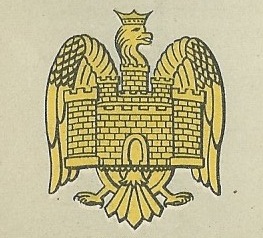
The Bedfordshire Yeomanry was a Yeomanry regiment of the British Army. Serving intermittently between 1797 and 1827, it was re-raised in 1901 for the Second Boer War. It participated in the First World War before being converted to an artillery regiment. It served in the Second World War. Its lineage was maintained by 201 Battery, 100th (Yeomanry) Regiment Royal Artillery until that unit was placed in suspended animation in 2014.
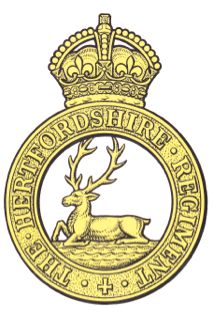
The Hertfordshire Regiment was a line infantry regiment of the Territorial Army, part of the British Army. Originating in units of Rifle Volunteers formed in 1859, the regiment served in the Second Anglo-Boer War and the First and Second World Wars before losing its separate identity in 1961. Its lineage is continued today by the Royal Anglian Regiment.
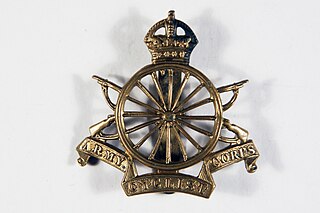
The Army Cyclist Corps was a corps of the British Army active during the First World War, and controlling the Army's bicycle infantry.

The North Somerset Yeomanry was a part-time cavalry regiment of the British Army from 1798 to 1967. It maintained order in Somerset in the days before organised police forces, and supplied volunteers to fight in the Second Boer War. It served on the Western Front in the First World War. At the outbreak of the Second World War, it continued to operate in the mounted role and then as a specialist signals unit. Postwar it joined the Royal Armoured Corps and later became infantry. Its lineage today is maintained by 93 Squadron 39 (Skinners) Signal Regiment.
The Denbighshire Hussars was a Welsh Yeomanry regiment of the British Army formed in 1794. It saw service in the First World War before being converted into a unit of the Royal Artillery. The lineage has been continued by 398 Squadron, Royal Logistic Corps.
The Montgomeryshire Yeomanry was a Welsh auxiliary unit of the British Army first formed in 1803. It provided volunteers to the Imperial Yeomanry during the Second Boer War and formed three regiments for service during World War I. It was broken up and converted to infantry and artillery in 1920.

The East Midland Brigade was an infantry brigade of the Territorial Force, part of the British Army, that was raised in 1908. As the name suggests, it commanded infantry battalions recruited in the East Midlands of England: Bedfordshire, Northamptonshire, Cambridgeshire and Hertfordshire. The brigade was an integral part of the East Anglian Division.

Fulham House is a military installation at 87 Fulham High Street, Fulham, London. It is a Grade II listed building.
The 1st Northamptonshire Rifle Volunteers were a unit of the British Army raised from 1859 onwards as a group of originally separate Rifle Volunteer Corps (RVCs). They later became the 4th Volunteer Battalion of the Northamptonshire Regiment and saw action in the Gallipoli and Palestine campaigns during the First World War. Converted into a searchlight unit between the wars, they served in the defence of the United Kingdom and as an infantry regiment in liberated Norway during the Second World War. Postwar they continued in the air defence role until 1961 when they reverted to infantry as part of the Royal Anglian Regiment.

The Highland Cyclist Battalion was a bicycle infantry battalion of the Territorial Force, part of the British Army. Formed as part of the Volunteer Force in 1860, it became a Volunteer Battalion of the Black Watch in 1881. In 1909 it became an independent unit and served in the United Kingdom throughout the First World War. In 1920 it was converted as part of the Highland Divisional Signals.
The Huntingdonshire Cyclist Battalion was a bicycle infantry battalion of the British Army. Formed in the Territorial Force in February 1914, it remained in the United Kingdom throughout the First World War. After the war, in 1920, it was converted to infantry and became the 5th (Huntingdonshire) Battalion, Northamptonshire Regiment, in the Territorial Army. The battalion saw extensive service in the Second World War, fighting in France in 1940, Tunisia from 1942–43 and later Sicily and Italy from 1943–45 before ending the war in May 1945 in Austria. It continued to serve after the Second World War until May 1961 when it was amalgamated with the 4th Battalion, Northamptonshire Regiment, to form the 4th/5th Battalion, Northamptonshire Regiment.

The Hunter Street drill hall is a military installation in Kirkcaldy, Scotland.

The Port Hill drill hall was a military installation in Hertford, Hertfordshire.

The Corn Exchange is a former chapel, trading facility and military installation at Bank Street in Tonbridge, Kent.
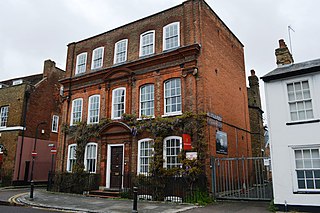
Yeomanry House is a military installation in Hertford. It is a Grade II* listed building.

The Church Street drill hall is a former military installation in Brighton. It is a Grade II listed building.
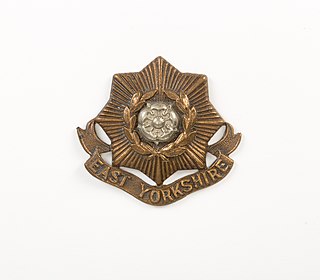
The 5th (Cyclist) Battalion, East Yorkshire Regiment was a mobile coast defence unit of Britain's Territorial Force. It was formed in 1908 from a nucleus provided by a Volunteer battalion first raised in 1859. It carried out its defence duties along the East Coast throughout World War I and after the war it was incorporated into a unit of the new Royal Corps of Signals.
















